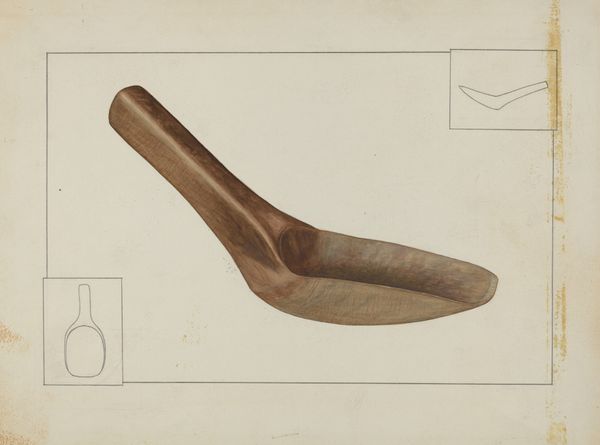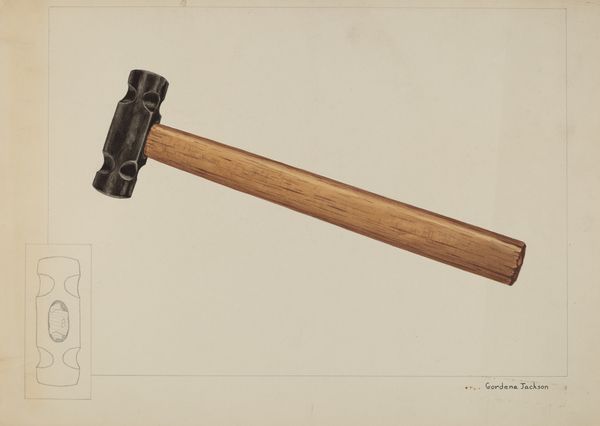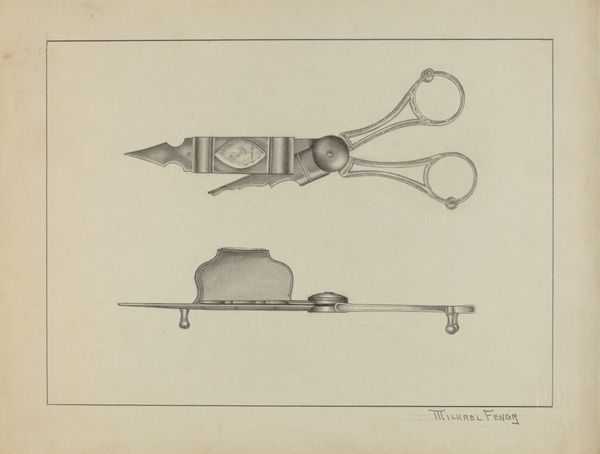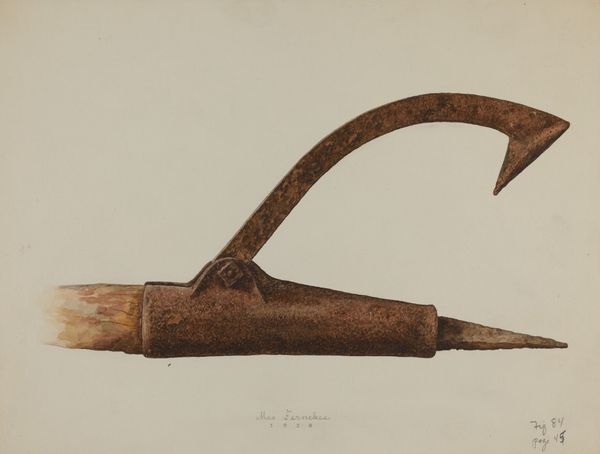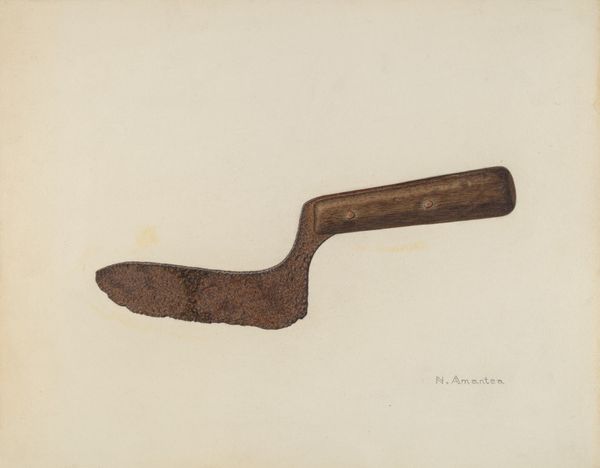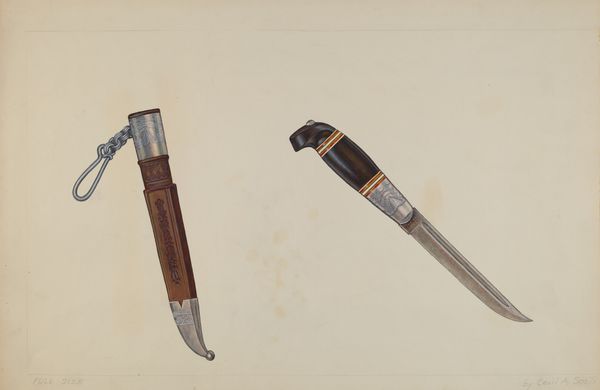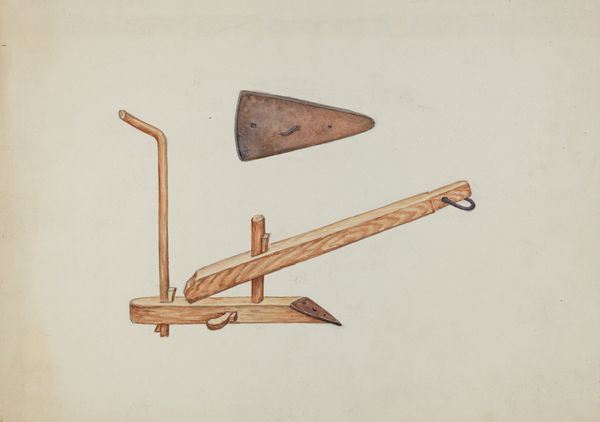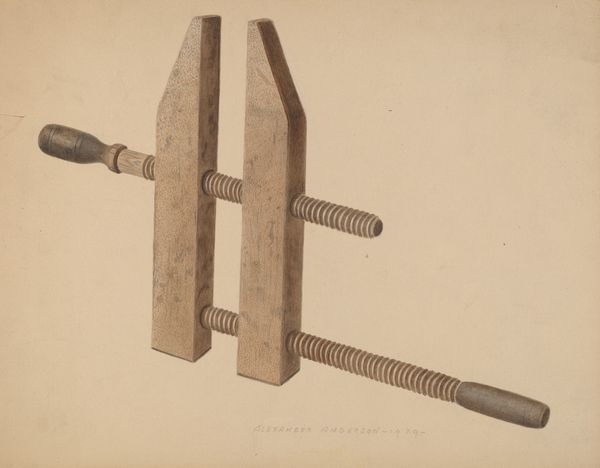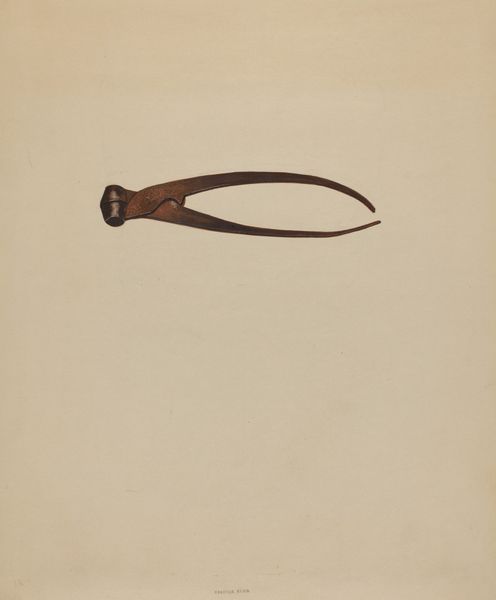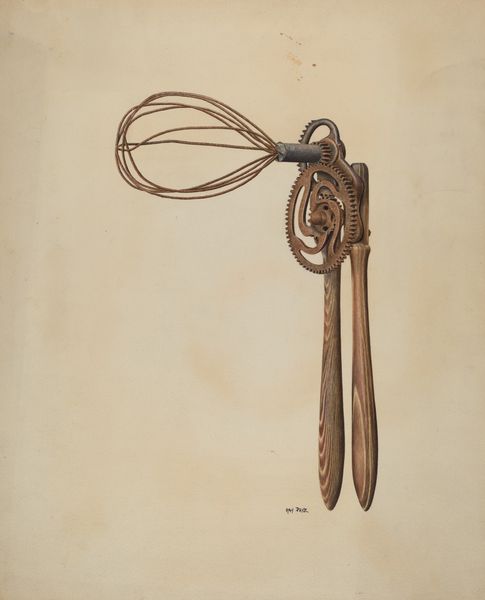
drawing, watercolor, pencil
#
pencil drawn
#
drawing
#
pencil sketch
#
watercolor
#
pencil drawing
#
pencil
#
watercolor
Dimensions: overall: 22.9 x 30.5 cm (9 x 12 in.)
Copyright: National Gallery of Art: CC0 1.0
Editor: Here we have "Drawknife," created around 1937 by Gilbert Boese, rendered with pencil and watercolor. I find the composition so interesting with the main image of the drawknife alongside seemingly earlier sketches of the handle shape and form. What do you see in this piece? Curator: Primarily, I am struck by the artist's rigorous attention to line and form. Note the precision in the rendering of the drawknife's blade, the subtle gradations of shading achieved with pencil and watercolor that give volume to the handle. It is a formal study of the object itself. Consider how the artist frames the object within the composition through preliminary contour sketches as they investigate various possible perspectives of the same artifact, creating depth through a sort of deconstruction. Editor: So, it's less about what the drawknife *is* and more about how the artist depicts its essence through pure form? Curator: Precisely. Boese has reduced the object to its essential elements. It's a celebration of craftsmanship captured through an equally meticulous artistic process. The subtle color palette supports, but never overwhelms the fundamental linear structure, wouldn’t you agree? Editor: I see what you mean. Initially, I was caught up in trying to interpret the object itself. But looking closer, the appeal really does lie in the artist’s formal examination. It's a powerful way to distill meaning, just through form and line. Curator: Yes, Boese prompts us to perceive the inherent beauty in utility, exposed via the language of art making.
Comments
No comments
Be the first to comment and join the conversation on the ultimate creative platform.
